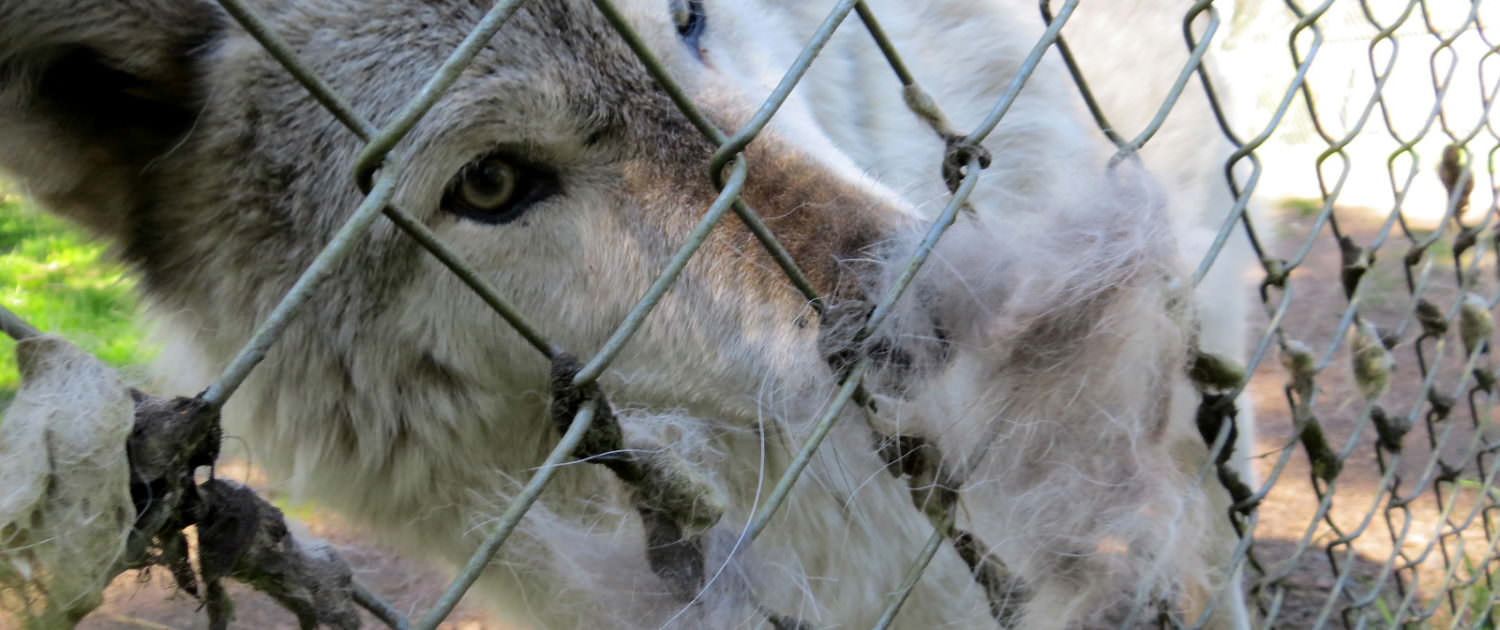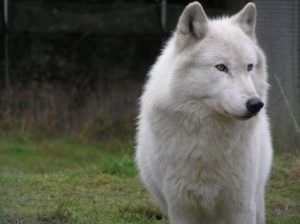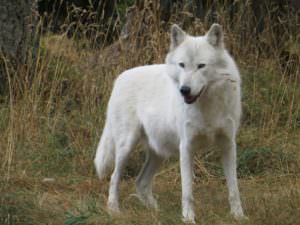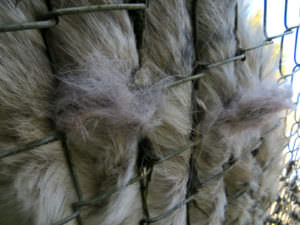Fur

Klondike delights in the scent of generations of wolves who have left calling cards of fur on the fence
By Brennan Stoelb, Animal Care Specialist
Springtime is here. I know this not only because the trees are in bloom, but also because my house is covered with a thin layer of dog fur. As a matter of fact, after I typed that last sentence, I proceeded to pet my husky Winnie who was wet from the rain and my hand is now covered in a layer of fur.
If you have been to the sanctuary in the winter months you could be fooled into thinking that wolves weigh 150 pounds or more, based purely on their perceived girth. The reality is that wolves are so well insulated that their bulkiness in winter is just fur! A wolf’s coat is comprised of two different types of fur; a soft undercoat and coarser outer coat with longer guard hairs. The longest fur is on the back by the shoulders, often referred to as a “cape.”

Bart with full winter coat
Wolves also have more fur in their ears than dogs to help protect the inner ear from the elements. When wolves are in extreme cold temperatures, say -30 degrees, their undercoat keeps them warm and you will often find them curled up in a ball with their noses tucked under their tails, like this husky.
So with their size in winter attributed to their fur, we can assume that the rest of the year they appear smaller.This true, but not for the reasons you may think. It makes sense to have more fur when it’s cold and less when it’s hot, but temperature isn’t the reason for the fur loss. Wolves, like all mammals, are photoperiodic- meaning that their endocrine cycles are regulated by the amount of daylight hours. In the spring as daylight hours increase, melatonin mediated changes cause prolactin levels to rise in both male and female wolves.
Prolactin is a hormone that triggers maternal and paternal behavior in wolves, among other species, such as denning, lactation, and shedding. The peak levels of prolactin coincide with the onset of summer and decrease throughout the rest of the year.Right now, the wolves are starting to look a little ragged, with clumps of fur hanging off of them.
You may even see a fence line or two that looks like it’s growing some fur. If you come and visit us this summer, just don’t be surprised if the wolves look smaller than the last time you were in the winter and be thankful that the hair isn’t on your furniture!


